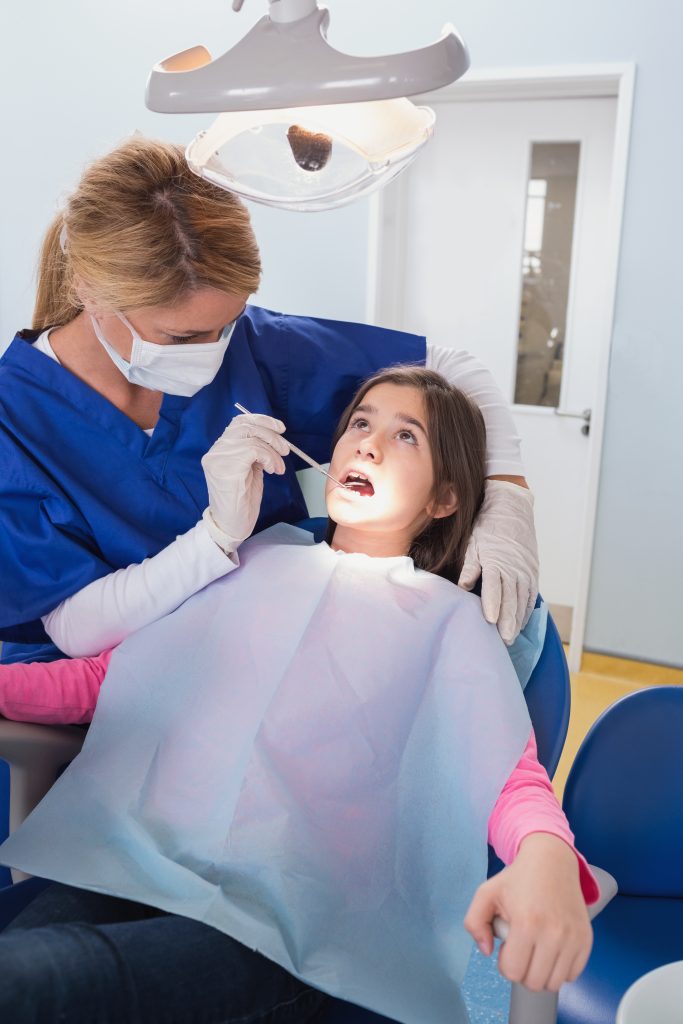
Restorative Procedures
Restorative Procedures
 Pulp Therapy
Pulp Therapy
The dental pulp is found at the center of each tooth, and is not visible to the naked eye. It is composed of nerve tissue and many blood vessels, which provide the tooth with vital nutrients, therefore making it “alive”! There are several ways in which this pulp tissue can be damaged, with some of the most common in children being from trauma or dental decay. Pulp therapy entails treatment of this dental nerve in hopes to treat, restore, and save the affected tooth in cases of reversible damage. Depending on the severity of involvement of the pulp, there are different forms of pulp therapy, some examples are listed below:
Partial Pulpotomy: If the pulp root remains unaffected by injury or decay, meaning the injury is isolated to the top portion of the pulp, the pediatric dentist can remove the affected tissue and surrounding decay, leaving the healthy portion alone. The resulting space is then filled with a biocompatible, therapeutic material with the goal of preventing infection and soothing the pulp. After the pulp treatment is completed, a dental crown is placed to strengthen the tooth and prevent future tooth fracture.
Pulp Cap: In cases where the decay or trauma is near, but not into the dental pulp, we will place another type of soothing, biocompatible material. This helps serve as a protective layer in hopes of preventing further insult into the deeper layers of the tooth, and associated nerve damage/infection. This is typically done after we remove the majority of a large cavity, prior to restoration with either a crown or white filling.
Dental Extractions
Extractions are the intentional removal of teeth for the further treatment or disease/trauma related process.
Extractions are sometimes an unfortunate but ultimately necessary form of treatment in dentistry. There are various reasons for extracting teeth among the most common are:
- Cavities progressing too far and causing an infection
- Cracked Tooth from a force of trauma.
- Periodontal disease
- Orthodontic needs
Having a tooth removed doesn’t mean that is the end of that treatment. Depending on the tooth, the age of the person and position in the jaw, some empty spaces can be left alone. But for the vast majority, these spaces be filled with a replacement. This can happen in different ways.
- Removable prosthesis (Dualflex/Vaplast partial)
- Implant prosthesis with crown
- Fixed dental prosthesis (Bridge)
- Orthodontic treatment
Every tooth is different, every space is different, every patient is different.
There are generalities, but examination, treatment plan and discussion are the best way to create a plan of action with all things considered including cost.
